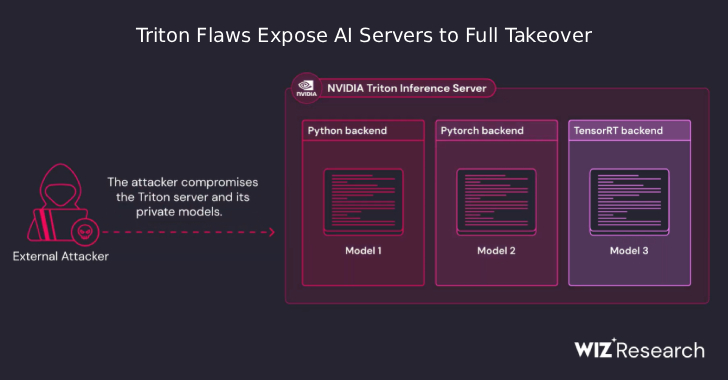
What is a Business Continuity Program?
In an increasingly interconnected and volatile business landscape, the ability to weather disruptions and ensure the continuous delivery of products and services is paramount. Enter the realm of business continuity programs. These comprehensive strategies are designed to safeguard organizations from a wide array of threats, ranging from natural disasters to cyberattacks, ensuring that they can not only survive but thrive in the face of adversity. In this article, we will delve into the concept of a Business Continuity Program (BCP), exploring its significance, components, and the steps to develop an effective one.
Understanding Business Continuity
Business continuity refers to an organization’s ability to maintain essential functions and services in the event of a disruption. Disruptions can take various forms, including but not limited to natural disasters like earthquakes, hurricanes, or floods, as well as man-made incidents such as cyberattacks, supply chain disruptions, or even pandemics. In essence, business continuity is about keeping the lights on when the unexpected occurs.
A robust business continuity program is not merely a reactive measure but a proactive strategy that encompasses planning, risk assessment, and resilience-building activities. The ultimate goal is to minimize downtime, reduce financial losses, and protect an organization’s reputation.
What is a Business Continuity Program (BCP)?
A Business Continuity Program (BCP) is a structured approach to ensuring an organization’s ability to maintain essential operations and services during and after a disruption. It is a holistic strategy that goes beyond simple disaster recovery plans and encompasses a wide range of activities and processes. The key elements of a BCP include:
- Risk Assessment and Business Impact Analysis (BIA)
Understanding the risks your organization faces is the foundation of any business continuity program. A thorough risk assessment identifies potential threats, evaluates their likelihood and impact, and prioritizes them based on their significance. The business impact analysis (BIA) is closely linked, focusing on identifying critical business functions, the resources required to support them, and the consequences of their interruption.
- Business Continuity Planning
Once risks are identified and critical functions are defined, a BCP outlines specific strategies and procedures for maintaining those functions in the face of disruption. This includes detailed plans for each critical area, resource allocation, communication strategies, and guidelines for personnel.
- Crisis Management
Crisis management is a vital component of a BCP. It involves the creation of a dedicated crisis management team, often led by senior executives, responsible for making critical decisions during a crisis. Effective communication, both internally and externally, is a crucial aspect of crisis management.
- Disaster Recovery
While business continuity planning focuses on maintaining critical operations, disaster recovery specifically deals with the recovery of IT systems and data in the event of a technological failure or cyberattack. It includes backup and recovery procedures, data replication, and offsite storage to ensure the rapid restoration of IT services.
- Training and Awareness
An effective BCP requires the active involvement and understanding of all employees. Training programs and awareness campaigns ensure that staff members are well-prepared and know their roles and responsibilities in the event of a disruption.
- Testing and Exercises
Regular testing and exercises are essential to validate the effectiveness of the BCP. These drills simulate various disaster scenarios to identify weaknesses and areas for improvement in the plan. Testing also helps train personnel in responding to emergencies.
- Continuous Improvement
A BCP is not a one-time effort; it is an ongoing process. Continuous improvement involves reviewing and updating the plan based on lessons learned from testing, real-life incidents, and changes within the organization or its environment.
The Significance of Business Continuity Programs
Now that we’ve outlined the components of a BCP, let’s delve into why these programs are so crucial for organizations of all sizes and industries:
- Minimizing Downtime
Downtime can be extremely costly. Every minute of system unavailability or halted operations can result in significant financial losses. A well-implemented BCP aims to minimize downtime by ensuring swift recovery and continuity of critical functions.
- Protecting Reputation
Disruptions can damage an organization’s reputation, eroding trust with customers, partners, and stakeholders. A BCP helps maintain a positive image by demonstrating a commitment to preparedness and resilience.
- Legal and Regulatory Compliance
Many industries have legal and regulatory requirements for business continuity planning. Failing to meet these obligations can result in fines and legal liabilities. A BCP helps ensure compliance with such requirements.
- Enhancing Competitive Advantage
Organizations with robust business continuity programs often gain a competitive edge. Clients and partners are more likely to choose companies they perceive as reliable and resilient, particularly in industries where service continuity is critical.
- Supply Chain Resilience
Disruptions in the supply chain can be catastrophic for an organization. A BCP includes strategies for supply chain resilience, reducing the impact of supplier-related disruptions.
- Peace of Mind
Knowing that there is a plan in place to deal with disruptions can provide peace of mind to employees, management, and stakeholders. This confidence can improve morale and productivity.
Steps to Develop an Effective Business Continuity Program
Building an effective BCP requires careful planning and dedication. Here are the key steps to develop a robust business continuity program:
- Senior Management Buy-In
Start by securing support and commitment from senior management. Their involvement is essential for allocating resources and setting the tone for the entire organization.
- Risk Assessment and Business Impact Analysis
Conduct a thorough risk assessment and business impact analysis to identify potential threats and prioritize critical functions.
- Establish a BCP Team
Form a dedicated team responsible for developing, implementing, and maintaining the BCP. This team should have representation from various departments to ensure a comprehensive approach.
- Develop the BCP
Create a detailed BCP that includes strategies, procedures, and guidelines for maintaining critical functions during disruptions. Ensure clear communication and resource allocation plans.
- Crisis Management
Establish a crisis management team and define their roles and responsibilities. Develop a communication plan to ensure that key stakeholders are informed during a crisis.
- Disaster Recovery Planning
Create a disaster recovery plan for IT systems and data. Ensure that backups, recovery procedures, and data protection measures are in place.
- Training and Awareness
Train employees on their roles and responsibilities in the BCP. Conduct awareness campaigns to ensure that all staff members understand the importance of preparedness.
- Testing and Exercises
Regularly test the BCP through drills and exercises. Use different scenarios to identify weaknesses and improve the plan’s effectiveness.
- Continuous Improvement
Review and update the BCP regularly to incorporate lessons learned and address changing risks and business needs. Ensure that the BCP remains up to date and relevant.
- Document and Communicate
Document the BCP comprehensively, including all plans, procedures, and contact information. Ensure that all employees are aware of the plan and know how to access it.
Conclusion
A Business Continuity Program (BCP) is a critical aspect of modern business operations. It is not a luxury but a necessity in a world where disruptions are increasingly common and can have far-reaching consequences. By implementing a BCP, organizations can minimize downtime, protect their reputation, and ensure resilience in the face of unforeseen challenges. Developing an effective BCP requires careful planning, commitment, and continuous improvement, but the benefits far outweigh the work involved.
Contact Cyber Defense Advisors to learn more about our Business Continuity Program solutions.





